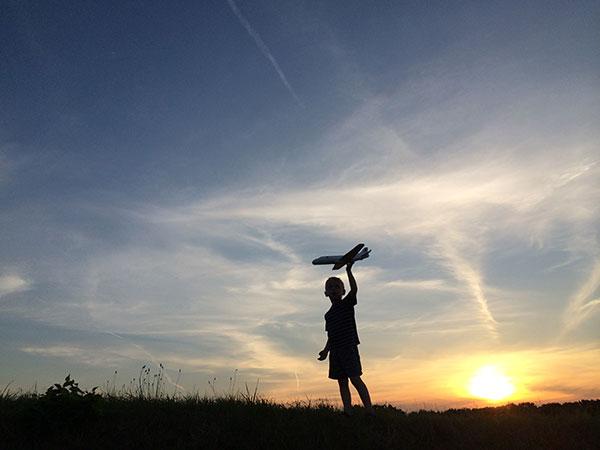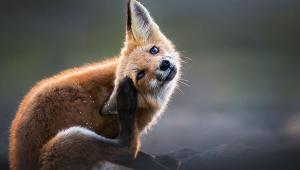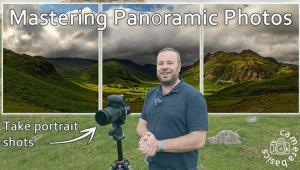How to Turn Instagram Into a Second Career: One Photographer’s Story

I was pretty sure I wanted to talk with Eric Ward when I saw his iPhone pictures at various sites around the Web. I was absolutely sure when I read, at one of those sites, his best photography secret: “Perspective. I’m 6’4” and I see the world differently than my 3 year-old. Change your perspective while shooting a scene and you’ll find a whole new scene to shoot.”
I like it when photographers work their kids into their ideas and their photographs.

Ward is not a photographer by profession—he’s a teacher, and has been for 22 years—but he’s a professional if you consider that he’s carried out a number of pro assignments and sold his images—most notably three of them to Apple for their iPhone 6 “Shot on iPhone” ad campaign.
His professional success is largely due to his social media presence, particularly on Instagram, where he’s been posting for about five years.

He’d photographed with a point-and-shoot and a DSLR, but his iPhone photography accelerated his use of Instagram. “I loved the interaction,” he says, “and I met so many true friends through it.”
Then came the professional side: Apple noticed him. Sony saw his work and sought him out, and now he’s a part of their Alpha Imaging Collective and shoots with an A7R II camera in addition to his iPhone. Other assignments came his way, including a long-term gig with Clif Bar and a 10-day shoot for Minnesota’s Explore Minnesota campaign, which he photographed entirely with his iPhone.

“It’s been a fun ride to be able to turn a hobby into a second career,” Ward says.
Origin Story
Eric Ward came to photography in the black-and-white darkroom of a high school photo course. “That moment when the image comes onto the print—there’s nothing like that,” he says. Drawn to the world of professional photographers, he homed in on Sam Abell. “I don’t shoot the same things Abell does, but the stories he’s able to tell with images really resonated with me, and I was inspired by his compositions, how he put basic elements together, and how his pictures have layers that tell stories within one frame. I’m still working toward that.”
Ward is not only a talented photographer, he’s a talented observer. An episode of Adorama TV, shot about two years ago, follows him as he takes photographic notes in the Toledo Museum of Art. “I think any photographer can draw inspiration from how artists used light, composed images, and created the layers they put into their paintings. All those elements can be transferred to photography.”
A turning point in his photography came with his recognition of the importance of perspective. “My older photos don’t show that awareness,” he says, “but the ones after I had kids do. I gave my oldest daughter, when she was young, a Fisher-Price digital camera, and seeing her pictures, it struck me how things looked from her perspective. I started seeing the world from her vantage point, where basic things look incredibly different.”

Another important element is his use of silhouettes, and that, too, has its origins with his children. When they were very young he used silhouettes to essentially hide their faces, and that led to his realization that the unidentified child is in a sense the universal child, and that child’s image would have greater resonance with viewers of his photos. “People can also identify with the possibilities in a photo featuring a silhouette of a child, or even an adult: I remember that, or I’ve been in a place like that, or I want to do that.”

Many of his Instagram photos these days are taken with his Sony, but his iPhone is still an important part of his imaging. “You shoot with the camera you have with you, and my iPhone is with me all the time. You can shoot a pretty strong photo with an iPhone, and as much as a classically trained photographer might disagree, an iPhone is fine for a lot of commercial work. I’ve been hired by people who knew I was shooting only with my iPhone.”
And, of course, iPhone cameras captured all those Instagram photos that captured all that attention.
Eric Ward’s Instagram username is @littlecoal. Google Eric Ward Adorama to view the Adorama TV episode that features his day at the museum.

















































